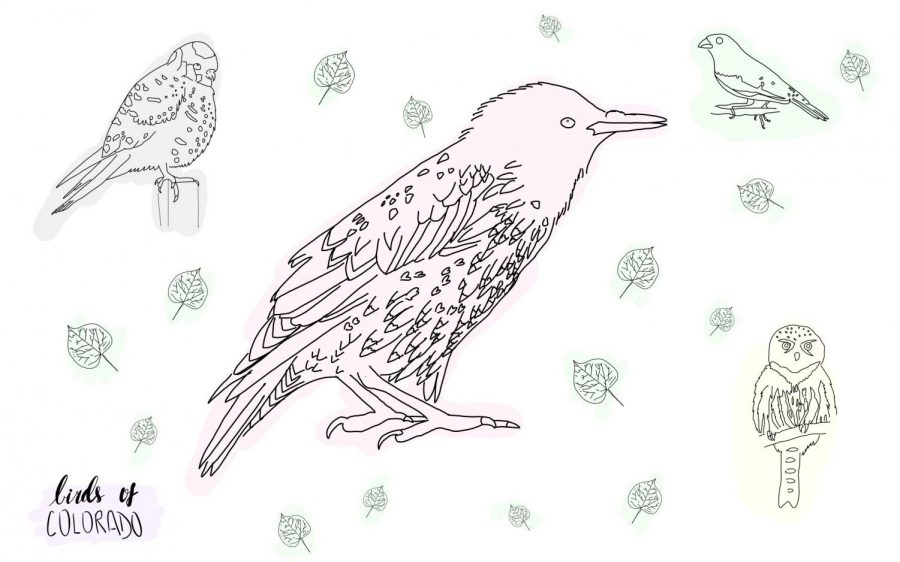Flying high with these winter birds
‘Birds of Colorado’ by Océane Jones shows the native avians of our centennial state
It’s February, and that means: Birding season! No, not the time to shoot these wonderful creatures-that was back in January-it’s time to watch them, obsessively, and identify which kind we had for lunch just a month back.
Colorado is located in the Central Flyway, a bird migration route that goes along the Great Plains across the United States and into Canada. Migrating birds fly through Colorado following the Central Flyway from mid-February to May, making it the perfect time to observe these beautiful creatures on their short stop in Colorado before they continue their migration.
Birding is defined as the observation of birds in their natural habitats as a hobby. Everyone can be a “birder”, “birdman”, “birdwomen”, or “birdwatcher” if they so please -it is as easy as getting outdoors, grabbing some ‘binocs’, and adding in a feather of respect for the environment.
Birds are beautiful and fascinating creatures – with their claws, feather-light bones, and songs unique to each species. Each detail, from the Steller’s jay’s dark shades of sapphire feathers to the fuzzy peach bill of the Dark-eyed Junco was marvosly evolved to fit the avian’s lifestyle and environment. Once meat-eating theropods, (a dinosaur with hollow bones and three-toed limbs), these ancient beings have transformed into the majestic creatures that fill our skies today.
According to the Colorado Bird Records Committee (CBRC) of Colorado Field Ornithologists, as of July 2020, there are 511 species of birds in Colorado. Ranging from the notorious Lark Bunting, a fashionable avian who is always in style as our state bird, to the ferocious Northern Goshawk, a breed of strong, independent women that are larger, stronger, and even smarter than the males.
Many consider the study of these feathered friends a form of obsession, or even a profession in some cases.
One such example is the Ornithologist, or a human whose obsession with avians has become what they live for. These fascinating creatures work for most of their lives, toiling in the ‘field’ to gain experience to earn a Ph.D. in zoology or wildlife biology with courses in ornithology. By the time they’ve accomplished all this, they are almost middle-aged and considered professionals in their field, making an average of $57,710 a year. For the rest of their lives, most ornithologists further study birds.
Everyone should go birding at least once in their lives because it’s February, which means it’s time to watch (and stalk), the birds – instead of lazily lying in our own nests for winter.

Océane Jones is an Editor-In-Chief of The Skier Scribbler. As an AHS senior, this is her third year on The Skier Scribbler In her free time, Océane enjoys...





























